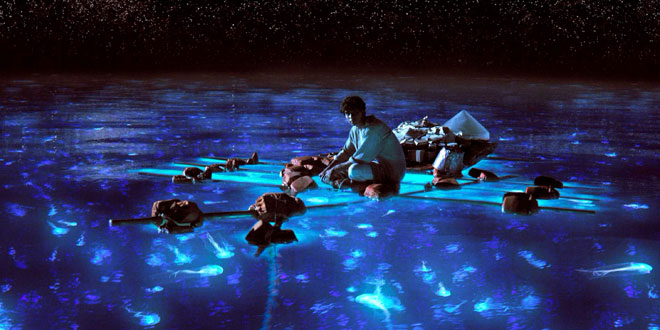The Contender plans to take a look at the Best Picture nominees for the upcoming 85th Academy Awards. Here, we’ll be looking at Ang Lee’s venture into 3D, The Life Of Pi.
For previous entries, click below:
Few directors have come along like Ang Lee, whom I respect for having an interesting vision to his stories, but often missing the mark for me. That’s not to say Mr. Lee is a bad filmmaker (he’s not,) but he’s managed to create more interesting failures than pure successes over his films. I can’t say I shy away from seeing one of his pictures, but very few have left a lasting impression.
It’s tough to classify where Life Of Pi would fall for me. The film just picked up the Best Live Action 3D Film from the International 3D Society, and deservedly so. It will (and should) win Best Visual Effects, and could see it even snatching Best Film Editing for some of the transitions Tim Sqyres uses. If the Best Picture award was based purely on these technical aspects alone, Life of Pi would be the runaway winner come Oscar Night.
Unfortunately, regardless of politics, Best Picture also means bringing it in terms of directing, pacing, writing, and acting, in addition to all those wonderful technical aspects this film has mastered. While I was fine with Life of Pi‘s tendency to take its time, it can get a little tedious at times. Ang Lee’s never been well with pacing his films quickly, and here it’s no different. There are times in Life of Pi that can be like watching paint dry, albeit very, very beautiful paint.
In that paint is a neatly woven story about the power of storytelling, which is the point of Life of Pi. Suraj Sharma spends the majority of the picture as Pi, and does an admirable job at capturing the boy who learns to become an adult. Irrfan Khan takes liberties as the older Pi, and really carries his scenes from falling into cheesy territory.
But this isn’t really a film about showy performances, although Sharma deserves the most credit as he does a tremendous job at carrying the film. This film is about showing that 3D isn’t just for big budgeted action pictures or animated features. Ang Lee does indeed outclass James Cameron’s Avatar here, and matches the heights Martin Scorsese took the format with 2011’s Hugo. Lee shows us that 3D isn’t about something blowing up or things coming at you, although those neon colored sea creatures look outstanding with the added dimension. 3D is about depth perception and making the world on the screen come alive. Lee does that, and future filmmakers looking to film in the format need to use this and Hugo as solid reference points.
The subtext of storytelling inherit in Life of Pi fits back into the way Lee uses 3D. Would the film be as powerful in 2D, and lose a lot of its marvel? Based on what I’ve heard from friends who saw it without the extra dimension, yes. You’re only cheating yourself if you opt to not see this in 3D (aside from the fact you should always see a film how the director intended.) Life of Pi doesn’t move as quickly as the latest blockbuster, but it’s tough not to get invested and be happy the movie moves at the pace it does. Ang Lee’s crafted a good story with some fine subtext, and married it with some of the best technical filmmaking to date.
And that’s really all Life of Pi should expect to win come February 24th. It may have been a serious contender for Best Picture when the nominations were first announced, but that star has faded. Even then, it could still be a dark horse, but I don’t think the filmmakers will be too upset if they only walk away with technical awards. At least, they shouldn’t be.

